To help those in the northern hemisphere pass their sunless days, I want to revisit some adventures I had in the past summer. I’ve finalised an article draft written at the time for your reading pleasure this winter.
I have been recently inspired by
and to try mentor grafting, where you graft young seedlings to rootstock.You would be surprised at how wide a graft you can go. I’m talking Grape to Schisandra which is an interclade hybrid, that is, the most they have in common in modern taxonomy is that they are both angiosperms (flowering plants). Obviously something else is going on here, and I believe the Chinese researchers used the argument that they have similar morphologies (vining types). This “Doctrine of Signatures” rationale was a stunning success for them.
There’s lots of evidence out there that when two plants are grafted together, genetic material is transferred from the rootstock to the scion. I thought I was introducing the world to some unknown research when I wrote about creating cold-hardy perennial tomatoes but
reached out and showed me the light: humanity has a storied but untold history of grafting different plants together.To go into more detail, once the scion is grafted onto the rootstock, we continually trim away all but the final two leaves of the scion to maximise the mentoring influence of the rootstock; hence the name, mentor grafting.
In mentor grafting, the scion and the rootstock are preferentially - for annuals -cotyledons (just germinated from seed). The scion should also be a hybrid. These factors help stack the deck for genetic change. The young (seedling) and confused (hybrid) nature of the scion means there is great plasticity for any incoming foreign rootstock genetic material. The graft should be allowed to heal in the dark for several days and kept at high humidity.
The Instructions
I’ve been pondering this for a while and decided to go nuts and graft lots of random things together in my garden. I mean, why not? I have nothing to lose but time.
So I’ll talk about my experiences with this kind of free form grafting which I will dub “in-situ mentor grafting”.
What you will need:
A precision hobby drill with drill bits ranging from from 0.5mm to 3.0mm.
Some superglue
Some sharp scissors
(Optional) Hand mister
The idea is this: find the the plant you want to graft to another. You need to make sure that the stem of the scion is not wider than the widest stem of the rootstock.
Cut off the scion and match the stem width of the scion to one of your drill bits
Cut off a stem from your rootstock that is wide enough for your drill bit to pierce vertically.
Pierce the rootstock stem with your drill bit and insert your scion.
Seal with some well placed squirts of superglue.
Mist the graft to give it a little moisture boost while the graft is healing
Cross your fingers and check back every day (mist if dry)
If you’re lucky and your rootstock is in a pot, take your pot and cover it with an opaque container to preserve humidity which will stop the scion from drying out. I live in quite a humid cold climate so this step is somewhat optional for me.
In some cases, if the rootstock is a lot wider than the scion, you can just pierce the side of a rootstock stem and insert your scion and seal with superglue.
Make sure you choose as small a piece of scion as possible to stop it from drying out and maximise the amount of sap that the rootstock can flood into the scion.
The Experiments
So enough with the instructions, let’s see what I decided to graft to what:
First off, I grafted my favourite Common Silverweed to Nepal Cinquefoil. I happened to have a potted Nepal Cinquefoil and I managed to locate some tiny Silverweed stems. I decided to try this graft because the Silverweed has not flowered yet, and I have observed that P. nepalensis is basically evergreen in this climate, whilst Silverweed dies back.
Next, I grafted some Chives to some Three-cornered Garlic. This was very tricky as Allium triquetrum has a triangular cross section stem and very little stem tissue, so I had to use the tiniest chive tip and the tiniest drill bit. This was just for fun.
Inspired by the schisandra-grape mentor graft, I decided to try cold-hardy kiwi and Akebia vine. Akebia is evergreen here, so some of those hardy genes in kiwi would not go amiss. This was a very difficult graft as kiwi stems are nearly all thicker than Akebia stems. I finally got lucky and found a match.
I also grafted Silverweed onto a volunteer potato. I just stabbed the side of the potato and inserted the smallest silverweed stem I could find. I did this just because potatoes have big tubers, and that’s as far as my reasoning goes.
I also grafted dandelion to a sunchoke (as they are both Asteraceae). This was very tricky because dandelion leaves have very little bare stem, but I eventually found one and made the graft.
Finally, I attempted two “true” mentor grafts: wild Brassica olerecea seedlings grafted onto perennial kale and hybrid F1 watermelon on Sharkfin melon. The watermelon on Sharkfin melon was done using two methods, the traditional “plug grafting” using the stem of the cotyleon and also in a moment of madness, plug grafting the root of the cotyledon into the sharkfin melon.
The Results
Sadly, none of these grafts lasted. I didn’t expect them to but this is the nature of moonshots.
My Silverweed on Potato graft lasted two weeks. This is indicative of some kind of sap flow between the two plants. My simple understanding of plant stems is that the phloem carries nutrient to further-up-parts, and the xylem carries water. The phloem has complicated tubes that carry nutrient around (“sieve tubes”), and my guess is that the wound didn’t knit together in this instance. The xylem is perhaps simpler and therefore hydraulic pressure was enough to force through the water needed.
The traditional mentor grafts of watermelon on sharkfin melon died quite quickly, but the “root” mentor graft persisted for weeks and weeks. The scion was very slow to gain adult leaves but it didn’t shrivel, and was well passed any misting. I eventually examined the graft closely and found that the root of the scion had tunnelled through the sharkfin melon stem and re-emerged further down! I can only surmise that the stem of the sharkfin melon was acting as an inefficient substrate for the watermelon root. In hindsight, I should have piled soil around the stem up to the emergence of that watermelon root tip, potted the whole thing up and placed it into a heated cold frame to coax some fruit out of it!
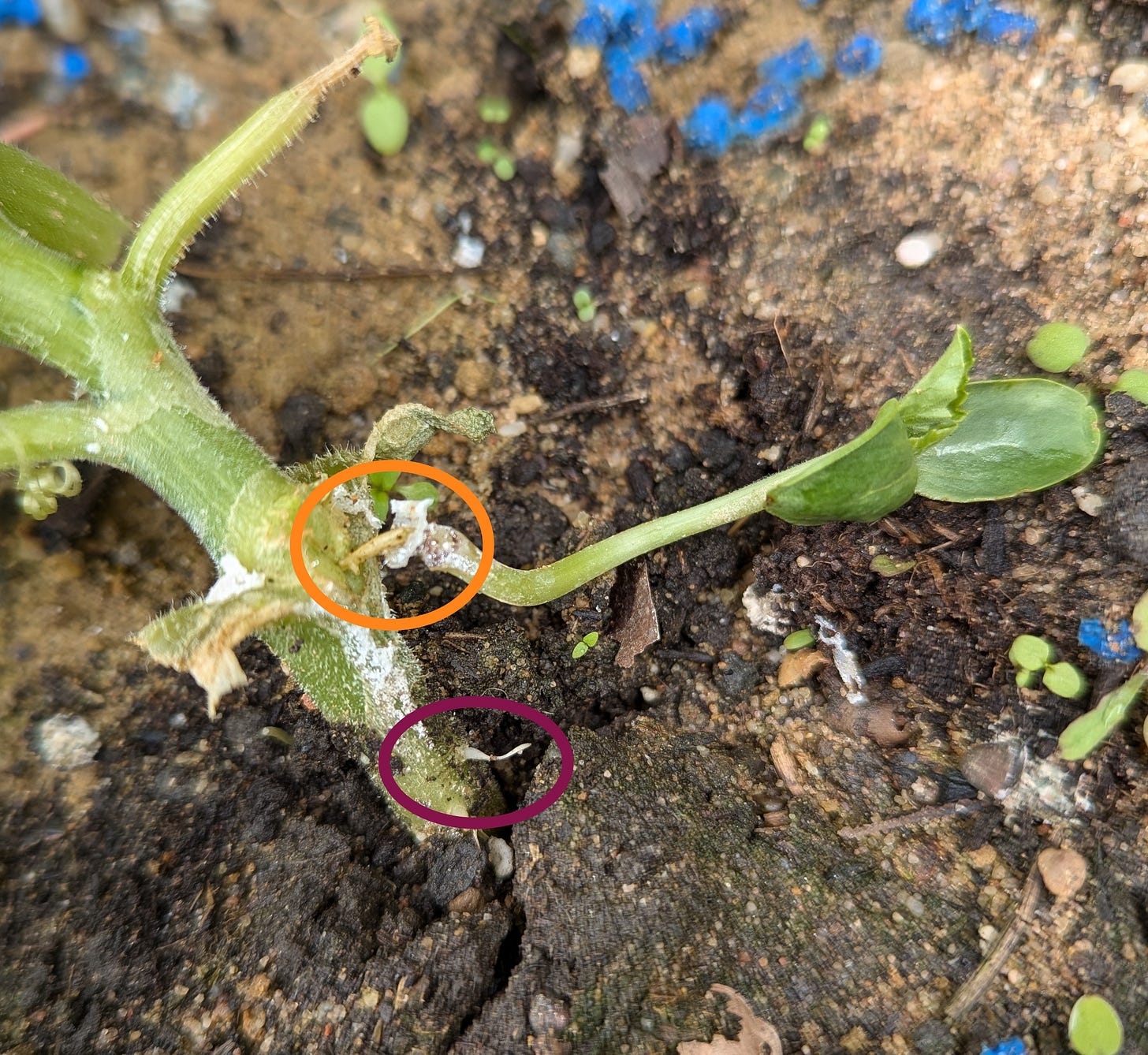
The wild B. olerercea did not like being grafted onto perennial kale at all and quickly withered. This makes sense as the literature talks about wild strains lacking the genetic plasticity for mentoring.
I put a fair amount of effort into my silverweed on nepal cinquefoil grafts, even using an old fish tank to control moisture but ultimately they failed (after about two weeks). I should try this again with Silverweed cotyledons instead.
As well as failing, the chives on three-cornered leek graft seemed to have some kind of fungal disease. Worth repeating just because of how fun this was.
The cold hardy kiwi on akebia was always a long shot because of the mismatch of stem size but I did my best.
The dandelion on sunchoke was an unlikely one due to mismatched stems. Apart from the flowering stem, the leaves of the dandelion are mostly leaf.
Final Thoughts
When I started these grafts, I purposefully decided not to think too hard. I just needed to have fun. I was feeling a bit burnt out for many reasons and though intellectually I knew these grafts would probably fail, I just wanted a bit of magic and child-like wonder in my life.
I didn’t care that most of the grafts were not optimally cotyledons, and I didn’t care that I didn’t provide a humid dark environment.
The result? I had buckets of fun, with lots of anticipation and excitement, a bit of precision and a surprising amount of tenderness.
I’d recommend “in-situ mentor grafting” to anyone.




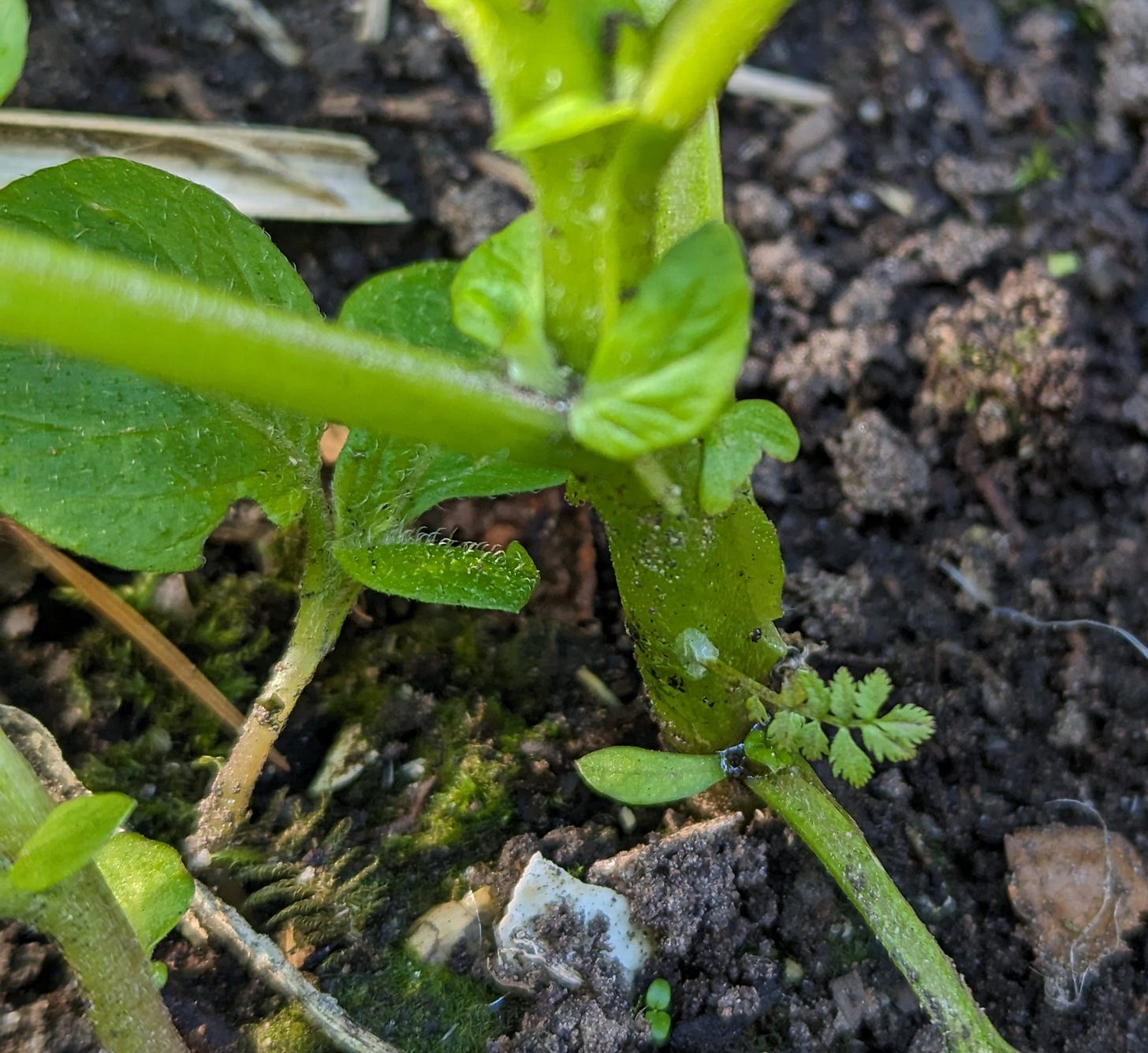
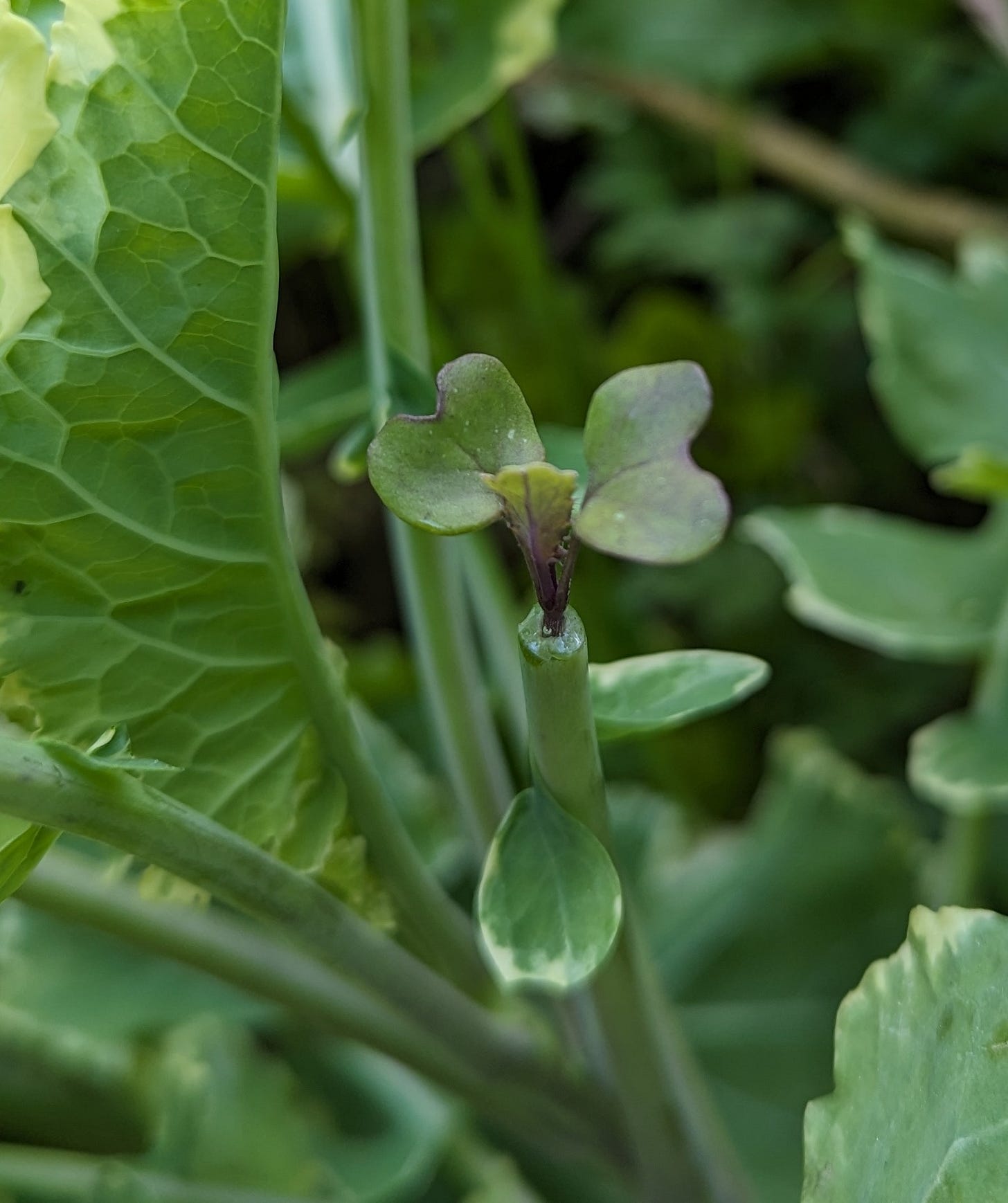
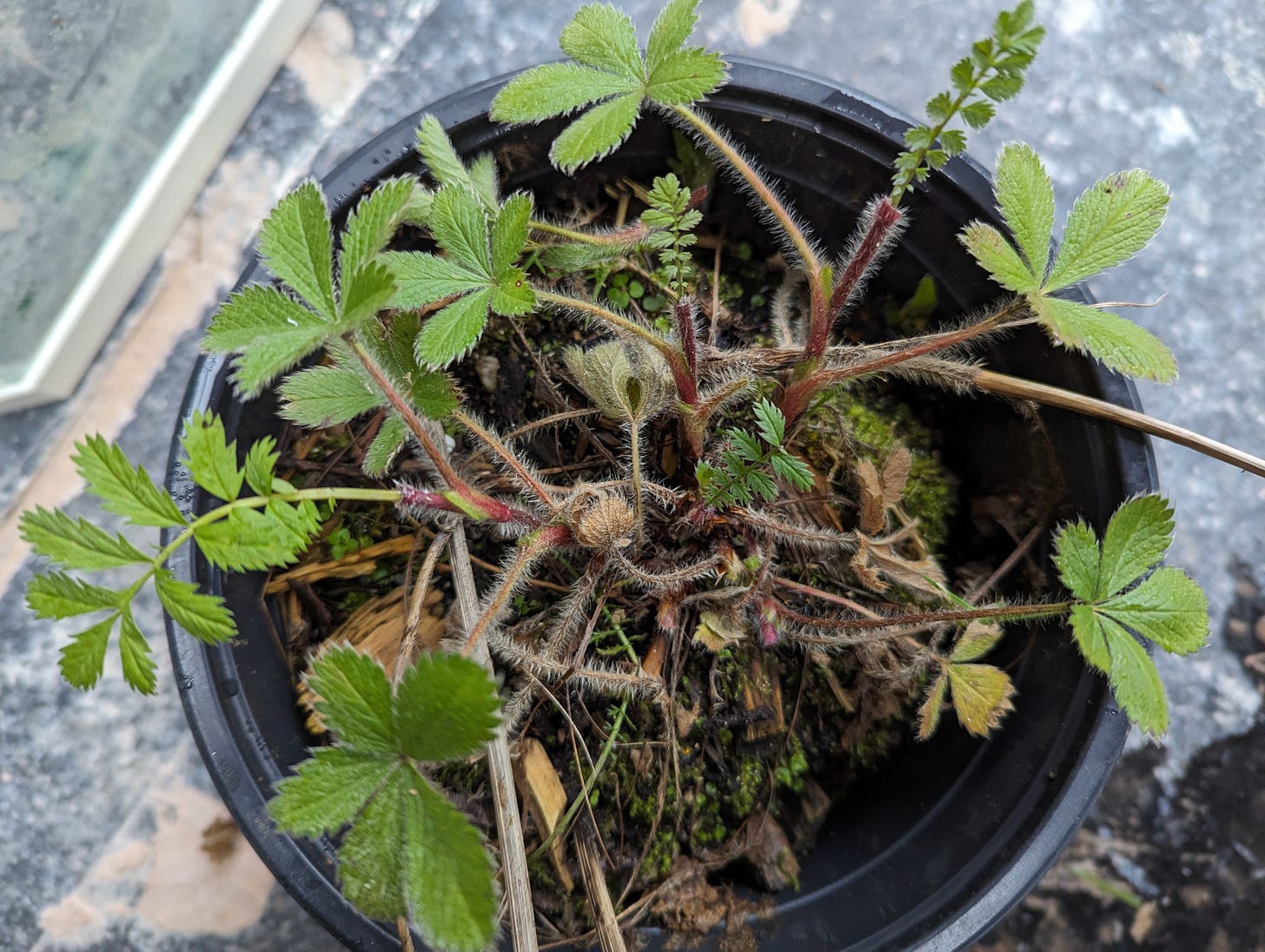
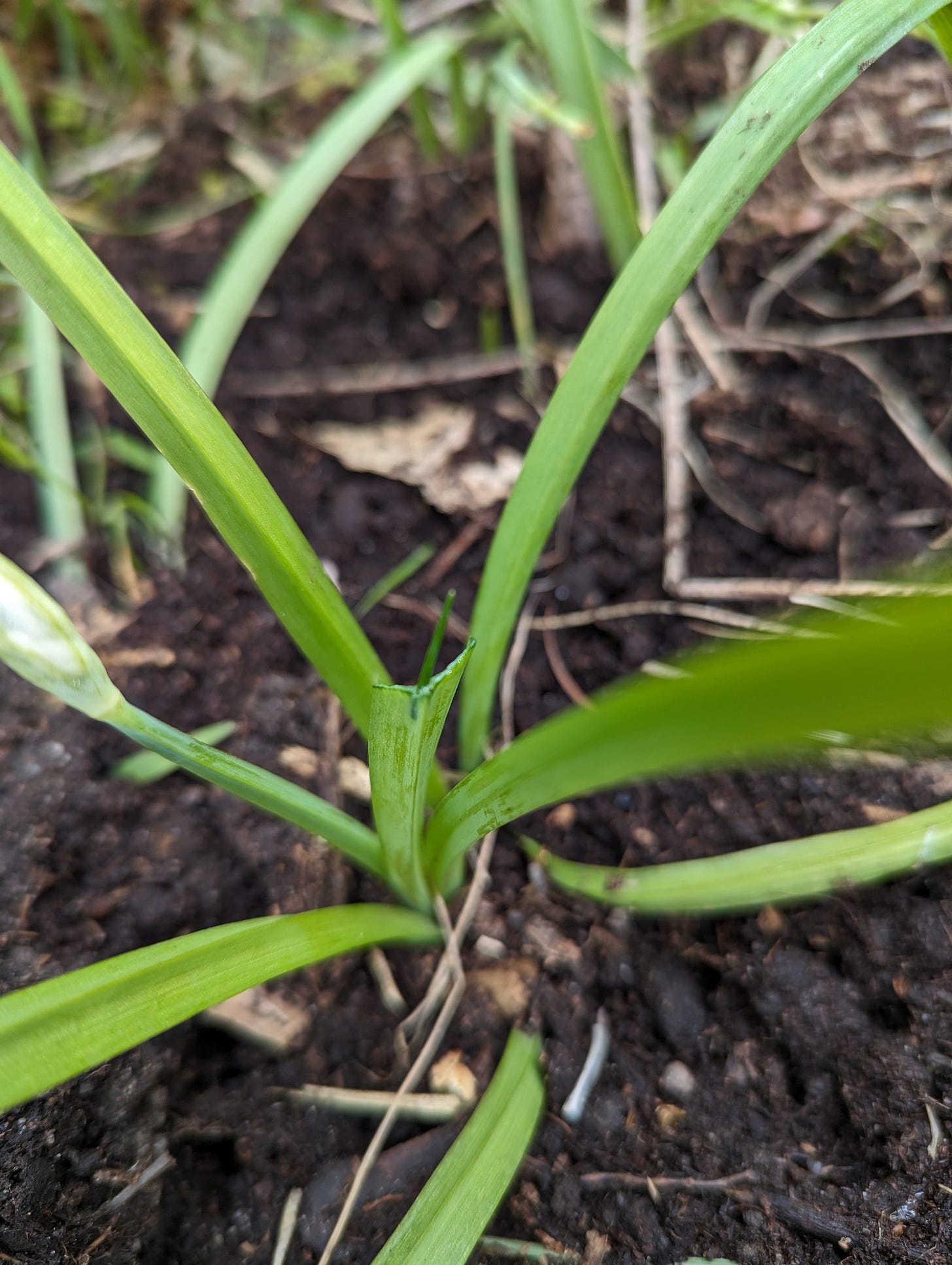
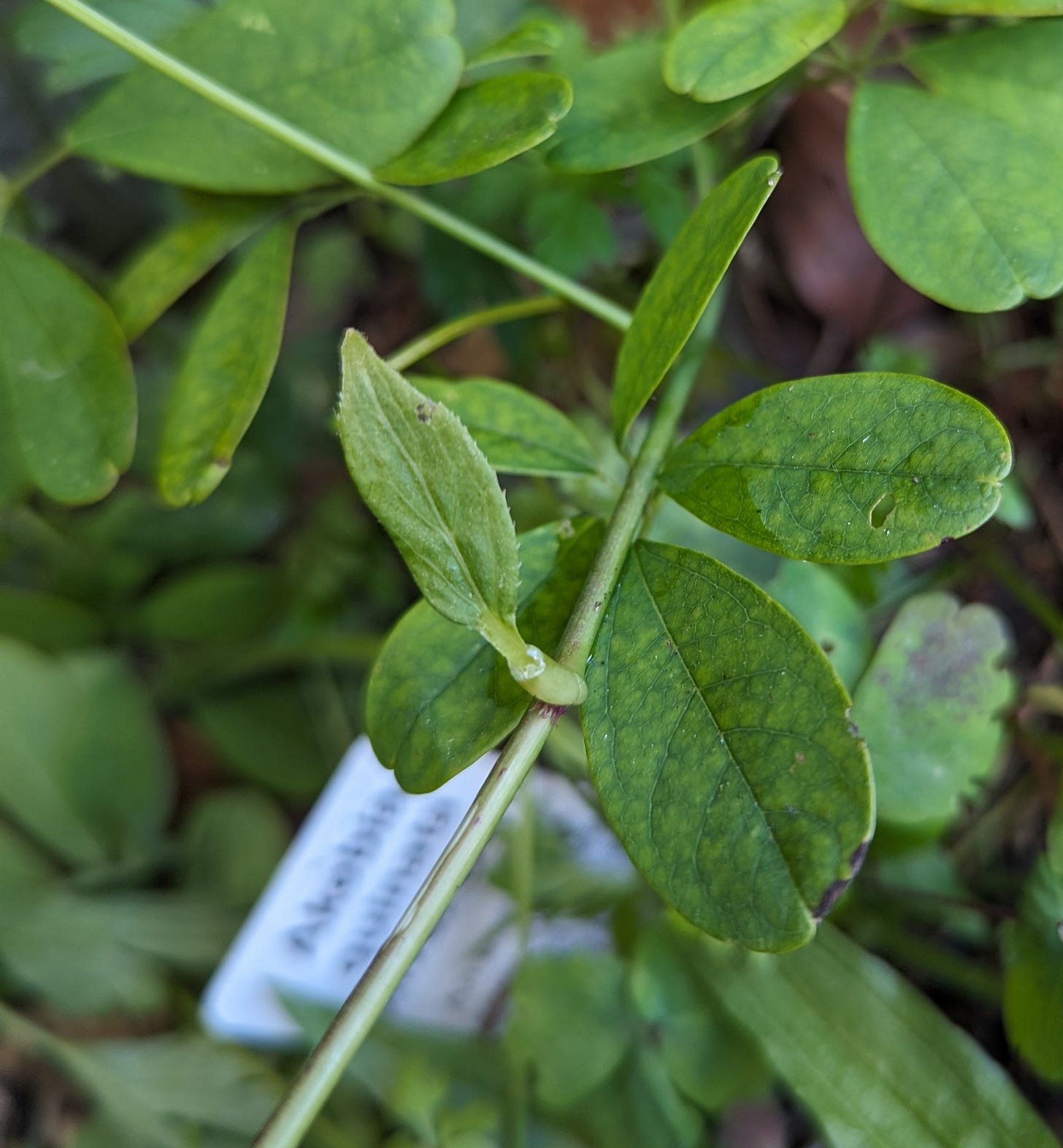
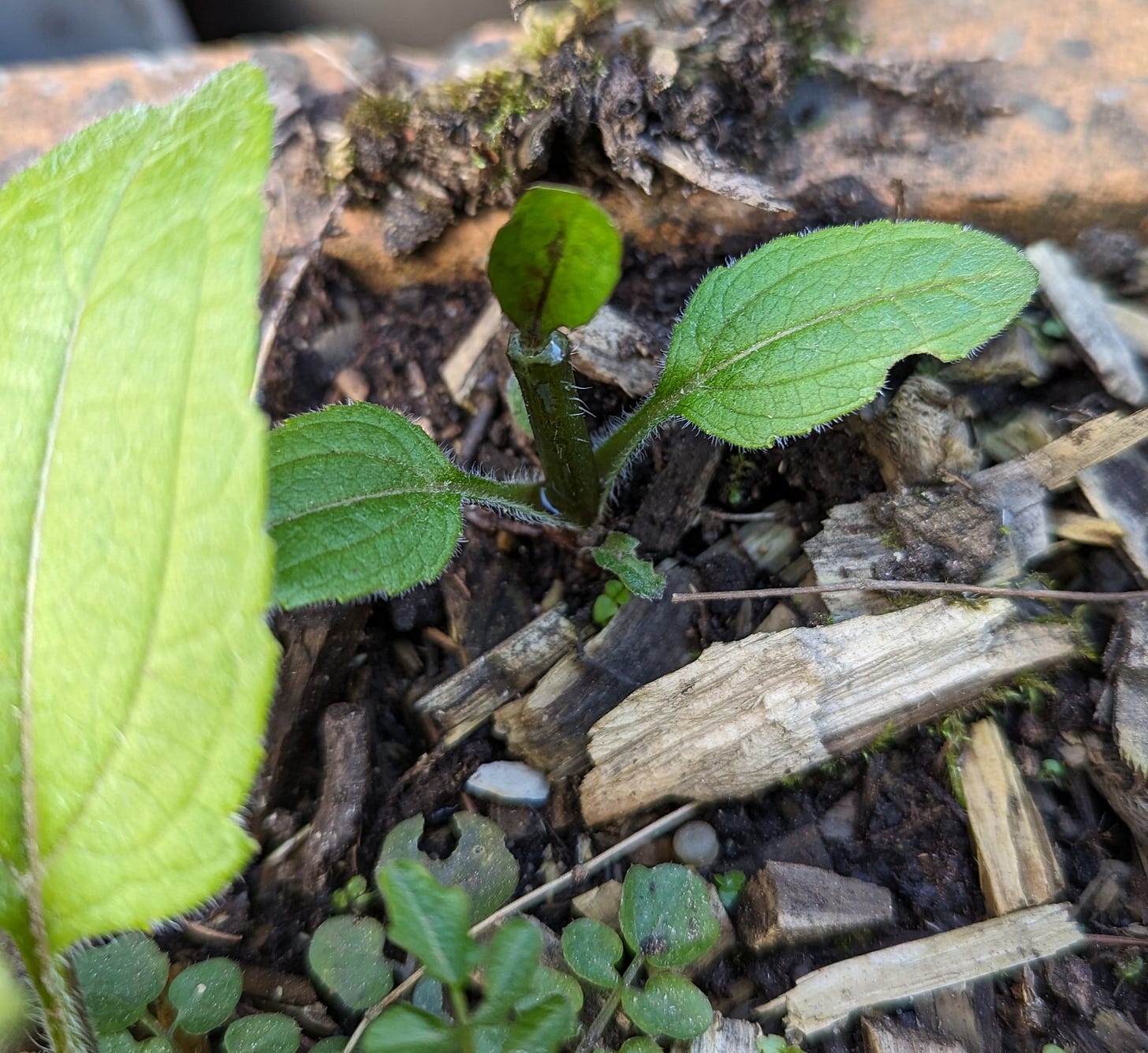
Love this post. I had a similar moment of madness this spring when I tried grafting random stuff. I didn’t care for them well in the healing stage so most didn’t survive. I tried a plug graft some bean cotyledons into apios americana tubers, and some various physalis species.
My mentor grafted pepper is still going and finally setting fruit (indoors now). It’s C. chinense onto C. Flexuosum. Which I hope will work because when I crossed the flowers they offspring died, possibly due to cytoplasmic sterility? I will try an annuum scion this year. I babied those grafts in an incubation chamber to heal them, which I’ll try again for other species.
I selfed some of the pepper flowers, and some I pollinated with flexuosum pollen.
Looking forward to trying more grafts this year. Thanks for your inspiration and enthusiasm!
Inspired by the 3 of you (Shane and Chance too), I'm planting these this spring. With goals of trying some of the techniques that have been discussed. Many of these are recommended for colder climates than mine. Some are interesting hybrids.
If any of you were using these together which combinations would you pursue, and why?
Macrocarpa Medlar
Portugal Quince
Ooharabeni Asian Pear
(cross of Max Red Bartlett and Asian pear Okasankichi)
Shipova European Pear
(European pear and mountain ash cross)
Ivan's Beauty Mountain Ash
(bred by plant breeder Ivan Michurin, a cross between mountain ash and aronia)
Ivan's Belle Mountain Ash
(cross of mountain ash and hawthorn bred by breeder Ivan Michurin)
And separate from the above:
Lingonberry
Highbush Cranberry
Evergreen Huckleberry
Rabbiteye blueberry
Russian bilberry